Is it possible to reference a React App that is running on another server using
<img src="https://www.react_app.com">
The idea is that the React App returns an image string (or similar) like this:
data:image/png;base64,iVBORw0KGgoAAAANSUhEUgA ...
So that it can be read in a <img src=""> tag?
The main question is what React code simply sends back a request with the string so that it can be read in src=""?
Also is there a timeout for how long an <img src=""> attempts to fetch an image?
React component imports
import React, { useCallback, useEffect, useState, useRef } from 'react'
import classNames from 'classnames'
import { fabric } from 'fabric'
import fabricConfig from './fabricConfig'
import FileUploader from './components/FileUploader'
import ColorPicker from './components/ColorPicker'
import Checkbox from './components/Checkbox'
import Button from './components/Button'
import getRatio from './utils/getRatio'
import getInitialCanvasSize from './utils/getInitialCanvasSize'
import getImageFromURL from './utils/getImageFromURL'
import resizeCanvas from './utils/resizeCanvas'
import removeSelectedElements from './utils/removeSelectedElements'
import getCanvasObjectFilterRGB from './utils/getCanvasObjectFilterRGB'
import setAttributes from './utils/setAttributes'
import { Z, Y, DELETE } from './utils/constants'
Fetch image from URL and automatically make changes to it on load
const imageUrl = "www.something.com/image"
if (imageUrl) {
new Promise(resolve => fabric.loadSVGFromURL(imageUrl, (objects, options) => {
const group = new fabric.Group(objects)
resolve(getRatio(group, canvas))
}))
.then(({ ratio, width, height }) => {
fabric.loadSVGFromURL(imageUrl, (objects, options) => {
try {
objects.forEach(obj => {
setAttributes(obj, {
left: (obj.left * ratio) + ((canvas.width / 2) - ((width * ratio) / 2)),
top: (obj.top * ratio) + ((canvas.height / 2) - ((height * ratio) / 2)),
})
obj.scale(ratio)
// MAKE EDITS TO THE SVG OBJECT HERE
canvas.add(obj)
})
canvas.renderAll()
// HERE I AM TRYING TO SAVE THE CANVAS STATE AND SEND IT BACK TO THE THIRD PARTY WEBSITE USING GET PARAMETERS
var canvasImg = ''
if(urlParams.get("export") === "png"){
canvasImg = canvas.toDataURL("image/png")
} else if (urlParams.get("export") === "pdf") {
canvasImg = canvas.toDataURL("image/pdf")
} else {
onCanvasModified(canvas)
}
} catch(err) {
console.log('Could not retrieve that image')
}
})
})


